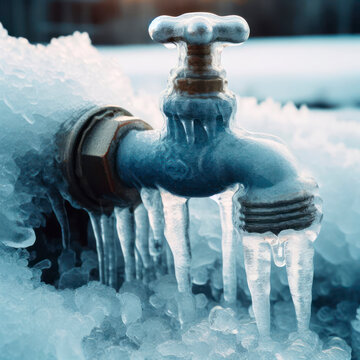Essential Tips for Preventing Frozen Plumbing in Cold Weather Seasons
Essential Tips for Preventing Frozen Plumbing in Cold Weather Seasons
Blog Article
What're your thoughts on 6 Ways to Prevent Frozen Pipes?

Cold weather can ruin your pipes, particularly by freezing pipelines. Below's exactly how to prevent it from occurring and what to do if it does.
Intro
As temperatures decline, the threat of icy pipelines rises, potentially bring about pricey repairs and water damages. Comprehending how to stop icy pipelines is important for homeowners in cool environments.
Comprehending Icy Pipes
What creates pipes to ice up?
Pipelines freeze when subjected to temperature levels listed below 32 ° F (0 ° C) for extended durations. As water inside the pipes freezes, it increases, taxing the pipe wall surfaces and possibly causing them to rupture.
Threats and problems
Icy pipelines can lead to supply of water interruptions, home damage, and costly repairs. Burst pipes can flooding homes and cause extensive architectural damage.
Signs of Frozen Pipes
Determining icy pipes early can avoid them from rupturing.
How to determine icy pipes
Try to find reduced water circulation from faucets, unusual smells or noises from pipes, and noticeable frost on exposed pipes.
Avoidance Tips
Insulating vulnerable pipes
Cover pipelines in insulation sleeves or make use of heat tape to shield them from freezing temperatures. Focus on pipes in unheated or outside locations of the home.
Home heating techniques
Keep interior rooms sufficiently heated, specifically locations with pipes. Open up cabinet doors to permit cozy air to circulate around pipes under sinks.
Safeguarding Outside Pipes
Garden hose pipes and outside taps
Separate and drain yard hoses before winter months. Install frost-proof faucets or cover exterior taps with insulated caps.
What to Do If Your Pipes Freeze
Immediate activities to take
If you suspect frozen pipes, maintain taps open up to ease stress as the ice melts. Make use of a hairdryer or towels soaked in warm water to thaw pipelines gradually.
Long-Term Solutions
Structural adjustments
Take into consideration rerouting pipes far from outside walls or unheated locations. Add extra insulation to attics, basements, and crawl spaces.
Upgrading insulation
Invest in top quality insulation for pipelines, attics, and walls. Appropriate insulation assists keep regular temperatures and minimizes the danger of frozen pipelines.
Conclusion
Avoiding icy pipelines requires aggressive measures and fast responses. By recognizing the causes, indications, and preventive measures, home owners can shield their plumbing during cold weather.
5 Ways to Prevent Frozen Pipes
Drain Outdoor Faucets and Disconnect Hoses
First, close the shut-off valve that controls the flow of water in the pipe to your outdoor faucet. Then, head outside to disconnect and drain your hose and open the outdoor faucet to allow the water to completely drain out of the line. Turn off the faucet when done. Finally, head back to the shut-off valve and drain the remaining water inside the pipe into a bucket or container. Additionally, if you have a home irrigation system, you should consider hiring an expert to clear the system of water each year.
Insulate Pipes
One of the best and most cost-effective methods for preventing frozen water pipes is to wrap your pipes with insulation. This is especially important for areas in your home that aren’t exposed to heat, such as an attic. We suggest using foam sleeves, which can typically be found at your local hardware store.
Keep Heat Running at 65
Your pipes are located inside your walls, and the temperature there is much colder than the rest of the house. To prevent your pipes from freezing, The Insurance Information Institute suggests that you keep your home heated to at least 65 degrees, even when traveling. You may want to invest in smart devices that can keep an eye on the temperature in your home while you’re away.
Leave Water Dripping
Moving water — even a small trickle — can prevent ice from forming inside your pipes. When freezing temps are imminent, start a drip of water from all faucets that serve exposed pipes. Leaving a few faucets running will also help relieve pressure inside the pipes and help prevent a rupture if the water inside freezes.
Open Cupboard Doors
Warm your kitchen and bathroom pipes by opening cupboards and vanities. You should also leave your interior doors ajar to help warm air circulate evenly throughout your home.

I was guided to that report about How To Avoid Freezing Pipes through an associate on another web page. Do you know someone else who is in to the topic? Feel free to share it. Thanks so much for going through it.
This Post Report this page